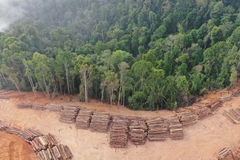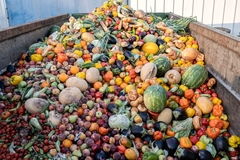Seafood solutions: EU project upcycles fish heads and brine into novel food ingredients
15 Aug 2024 --- An EU-funded project to turn fish waste into nutritious food has created new flavors made from fish carcasses and heads, as well as treatment processes to improve the utilization of fish brine and increase the shelf life of side streams.
Researchers at the Technical University of Denmark (DTU) collaborated with 13 partners from Belgium, Denmark, France, Spain and Sweden under project WaSeaBi to develop techniques and technology to turn often discarded fish parts, including the head, tail and entrails, which remain on the carcass into valuable products and ingredients.
Food Ingredients First sits down with DTU professor and head of research Charlotte Jacobsen for insight into the motivation and implications of the project for food and food processing businesses, including potential economic and environmental advantages.
“The project was motivated by the fact that up to 70% of aquatic biomasses are wasted or used for low-value products such as feed. The growing population calls for a better utilization of the biomass.”
“We performed a consumer study that showed that eating quality and information on the type and origin of the ingredients is important for the consumer, as well as sustainability and ethical aspects. This knowledge has been used in developing other technologies to produce ingredients.”

Food tech and flavors
Key players in the seafood and seafood processing sector, including Royal Greenland, Jeka Fish, Pescados Marcelino, Sweden Pelagic and Alfa Laval, have participated in the project.
For the fishing company Royal Greenland, the focus was to upcycle the cod’s residual parts after removing the filet.
 Seafood businesses stand to commercially benefit from the project’s findings and innovations.The WaSeaBi team has developed a flavor ingredient extracted from the carcass and head of the fish. Enzymes are added to give it a strong umami flavor. This enzyme hydrolysis process makes the leftovers more useful than just boiling them.
Seafood businesses stand to commercially benefit from the project’s findings and innovations.The WaSeaBi team has developed a flavor ingredient extracted from the carcass and head of the fish. Enzymes are added to give it a strong umami flavor. This enzyme hydrolysis process makes the leftovers more useful than just boiling them.
Jacobsen says the primary challenge in ensuring food safety while developing and applying such technologies is to treat the side streams the same way as the primary food product.
“This requires a change of the industry’s mindset so that they think about all streams from the biomass as being meant for human consumption. This means the side streams should be kept cold under the same hygienic conditions as the filet.”
The project has invented a way to utilize brine, a solution where fish is placed before salting for preservation.
Handlers must add chemicals, salts and proteins to the brine before sending it to a plant for treatment. This leads to additional costs for companies like Danish Jeka Fish, especially when the treated solution does not comply with the value stipulated for wastewater discharge.
To solve this, the researchers have devised two methods of processing water and increasing the concentration of nutrients for reuse.
Similarly, for Pescados Marcelino, the researchers have innovated a way to upcycle the nutritious water used to cook mussels instead of throwing it down the drain. The company currently uses filtering techniques, which leads to a concentrate needing further development before it hits the shelves as an ingredient.
Clean labels and consumer acceptance
Seafood businesses stand to commercially benefit from the project’s findings and innovations, with consumers showing keen interest in food generated from food waste.
“When using ingredients produced from side-streams, it also gives the (sea)food producer the possibility to have a clean label on the final product.”
Jacobsen adds that the team performed a feasibility analysis on all the solutions developed if implemented at the participating companies.
“In general, we found that there would be a net benefit of implementing the solutions within one to three years.”
“It was also important knowledge that the consumer didn’t show barriers to buying food products with ingredients produced from side streams and that the consumer thinks that, in the future, we have to use all food resources, including by-products and wastes.”
Tackling food waste The WaSeaBi team has developed a flavor ingredient extracted from fish carcass.
The WaSeaBi team has developed a flavor ingredient extracted from fish carcass.
Jacobsen notes that WaSeaBi’s approach can benefit other areas of food waste in the future.
“We can either use the individual technologies on a single type of raw material or use the same concept of looking at the entire value chain from catch to consumer on a range of food side-streams with some similarities, e.g., work on side-streams from different types of poultry could be approached the same way as we did with seafood.”
The other, less labor-intensive approach, she says, is to work with individual technologies on fewer species.
“For example, we are continuing the work on utilization of side-streams from small pelagic fish to implement some of the same technologies (sorting, antioxidant dipping, creating of flavor ingredients) on sprat,” she concludes.
By Anvisha Manral












